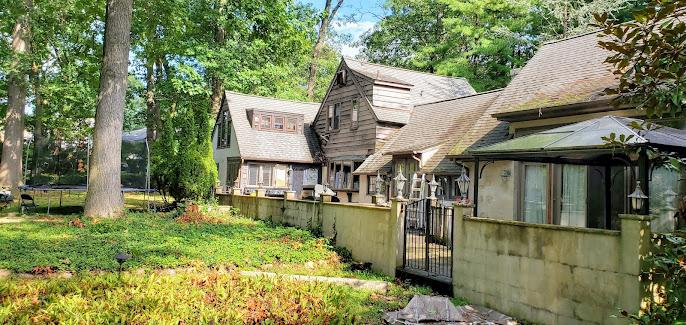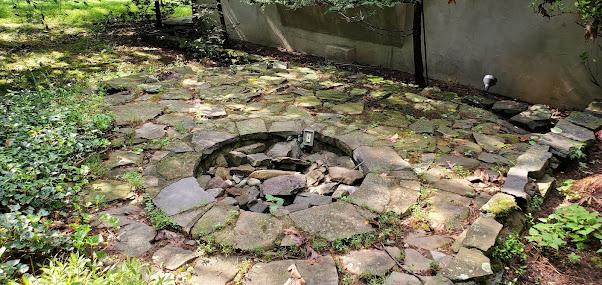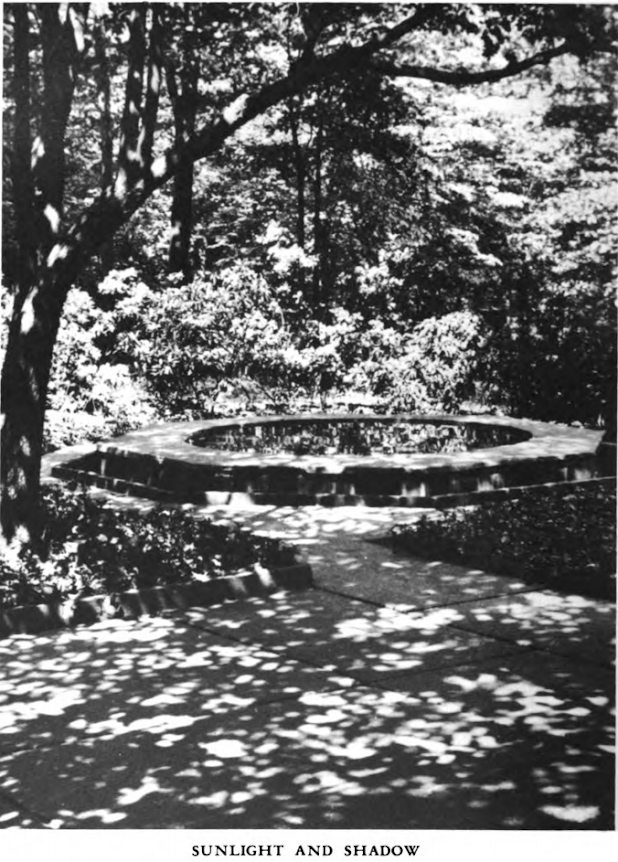
By Rick Hampson and Stephen Taylor
This century has seen the historical rediscovery of the forgotten person on Radburn’s design team -- Marjorie Sewell Cautley, a pioneering female landscape architect who helped shape Radburn almost as much as its more celebrated planners, Clarence Stein and Henry Wright.
For various reasons, ranging from her gender to her mental health, Cautley’s role was long minimized in many accounts of Radburn’s creation. But researchers, including Radburn’s own Felice and Larry Koplik, have drawn attention to Cautley’s sophisticated and prescient landscape.
Now, there’s another Cautley rediscovery: her home. She called it, with characteristic whimsy, Cricket’s Hearth. It’s where she shaped her own personal landscape; where she raised her daughter; and where she worked on her most important project – Radburn.
For decades, scholars knew about Cricket’s Hearth, but weren’t sure where it was. As it turns out, the home is hidden in plain sight – albeit behind towering pines and oaks Cautley herself probably planted – on a large lot in Hawthorne near the Glen Rock line.

Cautley and her husband Randolph built Cricket’s Hearth in the 1920s. Marjorie had her office and studio on the property, and lived there for about a decade until her commitment to a state mental institution in 1937.
In recent years the house has been enlarged, modernized and rented to a series of tenants – “a revolving door,'' in the words of one neighbor, Mark Smith. It has also, at various times, been for sale.
We got permission from the residents to look around the grounds – and soon realized that time has not been kind to Cautley’s landscape.

The grounds are overgrown and largely untended. The most striking visual features are children's play equipment, including a trampoline and a basketball hoop.

But Cautley’s landscape design is still discernible, in the trees she planted and the structures and paths she laid. Her stonework designs – for walls, edgings, pools – are intact. So are some small touches, like an ornate, wall-mounted water fountain with a lion’s head. A walled patio connects the house interior to Cautley’s landscape.



Photographs (some possibly of Cricket's Hearth) of similar garden features from Cautley’s 1935 book, Garden Design:



The main house has a big Gothic “C’’ on the chimney hidden behind a tall hemlock. It could stand for Cricket’s Hearth, for Cautley, or for Christianson, the surname of the property’s owner several decades ago.

The cottage that housed Cautley’s design studio sat on what is today a lot adjoining Cricket’s Hearth. This is where she almost surely created the designs for Radburn’s landscapes, including its parks and the plantings for many individual yards.


The structure has been enlarged into a single-family house. But the roofline of the original building is still visible in the stucco. And the yard contains what Cautley called a “garden aquarium’’ -- a charming stone pool set on an earthen podium surrounded by rhododendrons.

Although photographs of the garden features of Cricket’s Hearth appear in Cautley’s 1935 book, Garden Design, Cautley enthusiasts and scholars have long wondered about the home’s location and condition.
Part of the mystery was caused by Cautley herself. An online index to her papers at Cornell mentions the home’s location as Glen Rock, not Hawthorne (whose current historical society says it did not even know about her home.)
And Cautley usually listed her base as Ridgewood, a more prominent community and one where she had lived with relatives. It was also the site of Oak Croft, a development that featured six houses facing each other across a central green designed by Cautley.
After Oak Croft, Cautley was hired by Stein and Wright as landscape architect at Sunnyside Garden in Queens, and then at Radburn. She worked on several other Stein projects, and served as a consultant to the New Hampshire state park system, before her illness.
In his influential memoir, Toward New Towns for America, Stein praised Cautley’s landscapes as “rich, varied and imaginative.’’ But he mentioned her only in passing. The most comprehensive history of Radburn, by Daniel Shaffer, does not mention her at all.
` FINDING A LOST HOMESTEAD
After seeing a reference to Cricket’s Hearth in Cornell’s digital index to her papers, we found an online real estate ad for a property for sale called Cricket’s Hearth. But the ad did not mention Cautley. Perhaps the seller based the listing solely on the name on a small plaque next to the house’s side door.

Cautley’s choice of the name may have been inspired by The Cricket on the Hearth, an illustrated novella by Charles Dickens published in 1845. It was the third of the author’s five Christmas books, of which A Christmas Carol (1843) is the most famous.
In those days, a cricket on the hearth was considered a fortunate sign; many homes had a brass cricket on the mantelpiece for good luck. (Below is a photo of Cautley's actual hearth.)

Cautley’s luck, however, was anything but. The Great Depression wrecked plans for a much larger Radburn, with three times as much parkland. And two years after Radburn’s bankruptcy the landscape architect herself suffered a mental breakdown. Although she eventually was released from Greystone state hospital and even earned a master’s degree in planning at the University of Pennsylvania, she never fully recovered her professional or psychological equilibrium.
Her troubled marriage to Randolph ended in divorce, and it appears she never again lived at Cricket’s Hearth.
Marjorie Sewell Cautley is now considered an influential figure in American landscape architecture -- mentioned in a new exhibit by the Cultural Landscape Foundation, and the subject of a biography by Sarah Allaback of the Library of American Landscape History. As such, her cottage, gardens and studio -- now located and identified -- are historically significant.
Above all, Cricket’s Hearth testifies to Cautley's creative spirit, and to her determination to preserve a reminder of a New Jersey landscape that, even then, was disappearing.
Rick Hampson and Stephen Taylor lead free walking tours of Historic Radburn. For information, contact fjhampson@gmail.com